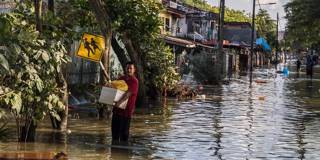The gap between rich and poor continues to widen around the world, but governments cannot provide the necessary resources to raise living standards without accurate measures of the scope of the problem. The Multidimensional Poverty Index offers policymakers an essential tool for building an adequate safety net.
KUALA LUMPUR – The 2019 Oscar-winning film Parasite attracted a global audience for its arresting portrayal of South Korea’s stark income inequality. The movie’s rendering of a low-income household’s acute sense of alienation resonated widely, no doubt because similar sentiments are palpable in many other countries. And the gap between the haves and have-nots is growing, thanks to the dual challenges of COVID-19 and climate change.
The poor suffer the most in times of crisis because they lack the social capital that protects those who are better off. To paraphrase Martin Luther King, Jr., the arc of inequality bends toward more inequality. That makes it imperative for policymakers to address the widening divide between rich and poor and craft adequate safety nets for those most in need.
The Multidimensional Poverty Index (MPI), which tracks non-income measures of deprivation like education, health, and living standards, is an essential tool in mapping the scope of the problem. My country, Malaysia, joined the global network of countries that use the MPI in 2013, after years of using outdated methods to measure poverty. In 2019, a scathing critique by then-UN Special Rapporteur on Extreme Poverty and Human Rights Philip Alston finally led the government to revise its definition.

KUALA LUMPUR – The 2019 Oscar-winning film Parasite attracted a global audience for its arresting portrayal of South Korea’s stark income inequality. The movie’s rendering of a low-income household’s acute sense of alienation resonated widely, no doubt because similar sentiments are palpable in many other countries. And the gap between the haves and have-nots is growing, thanks to the dual challenges of COVID-19 and climate change.
The poor suffer the most in times of crisis because they lack the social capital that protects those who are better off. To paraphrase Martin Luther King, Jr., the arc of inequality bends toward more inequality. That makes it imperative for policymakers to address the widening divide between rich and poor and craft adequate safety nets for those most in need.
The Multidimensional Poverty Index (MPI), which tracks non-income measures of deprivation like education, health, and living standards, is an essential tool in mapping the scope of the problem. My country, Malaysia, joined the global network of countries that use the MPI in 2013, after years of using outdated methods to measure poverty. In 2019, a scathing critique by then-UN Special Rapporteur on Extreme Poverty and Human Rights Philip Alston finally led the government to revise its definition.